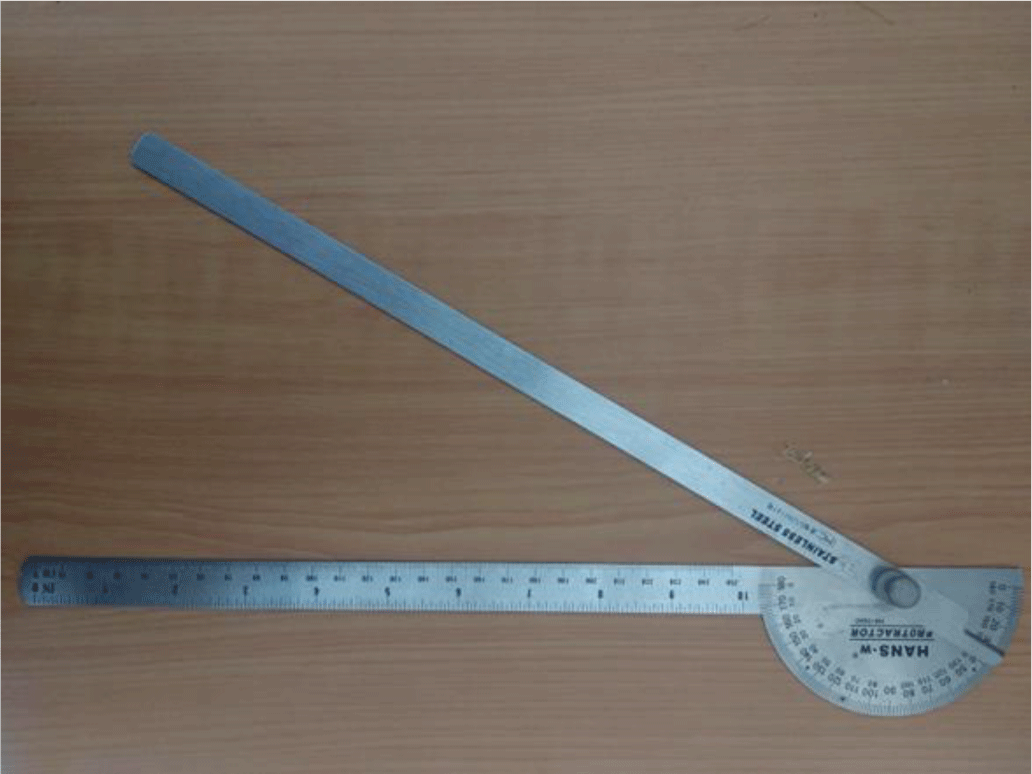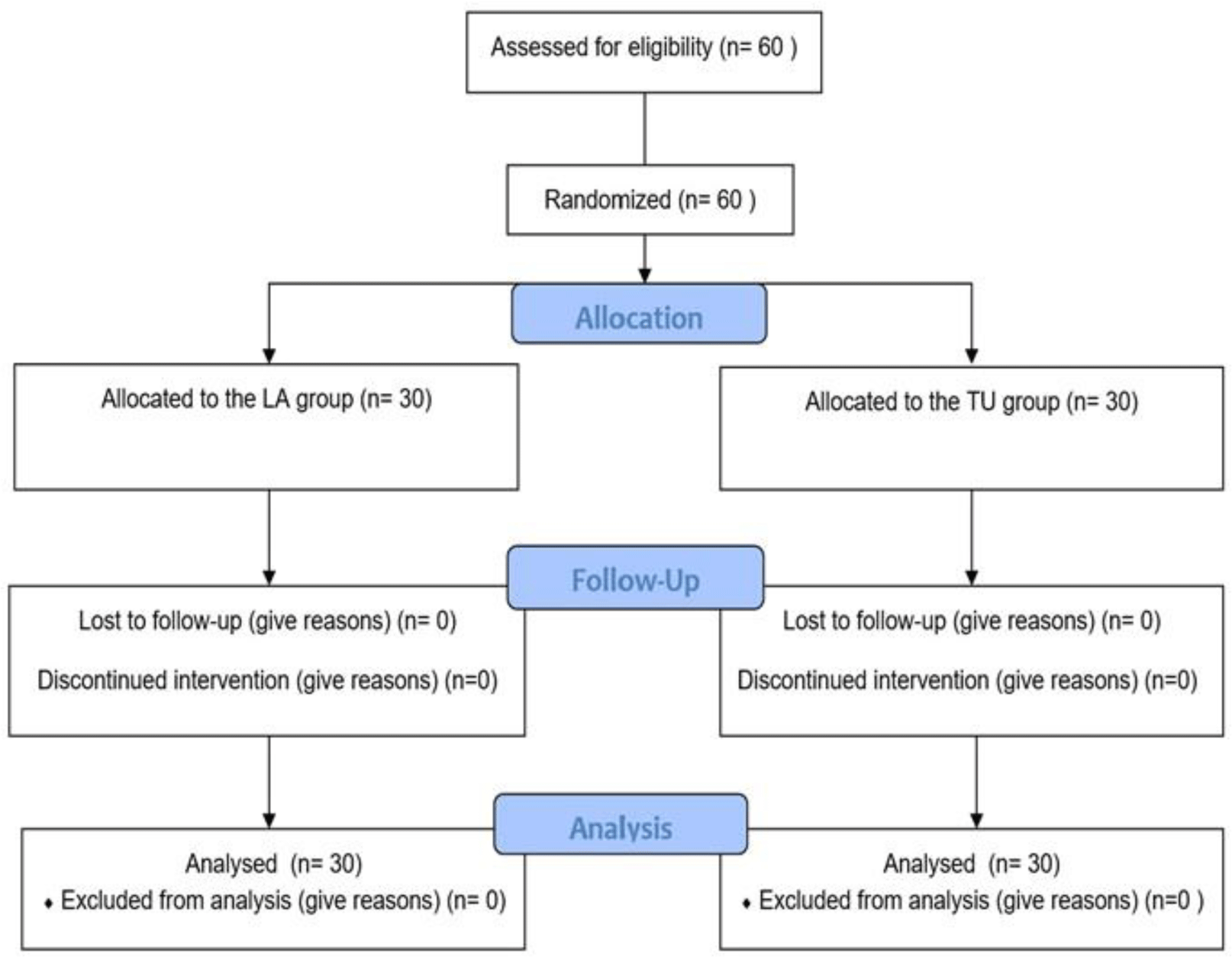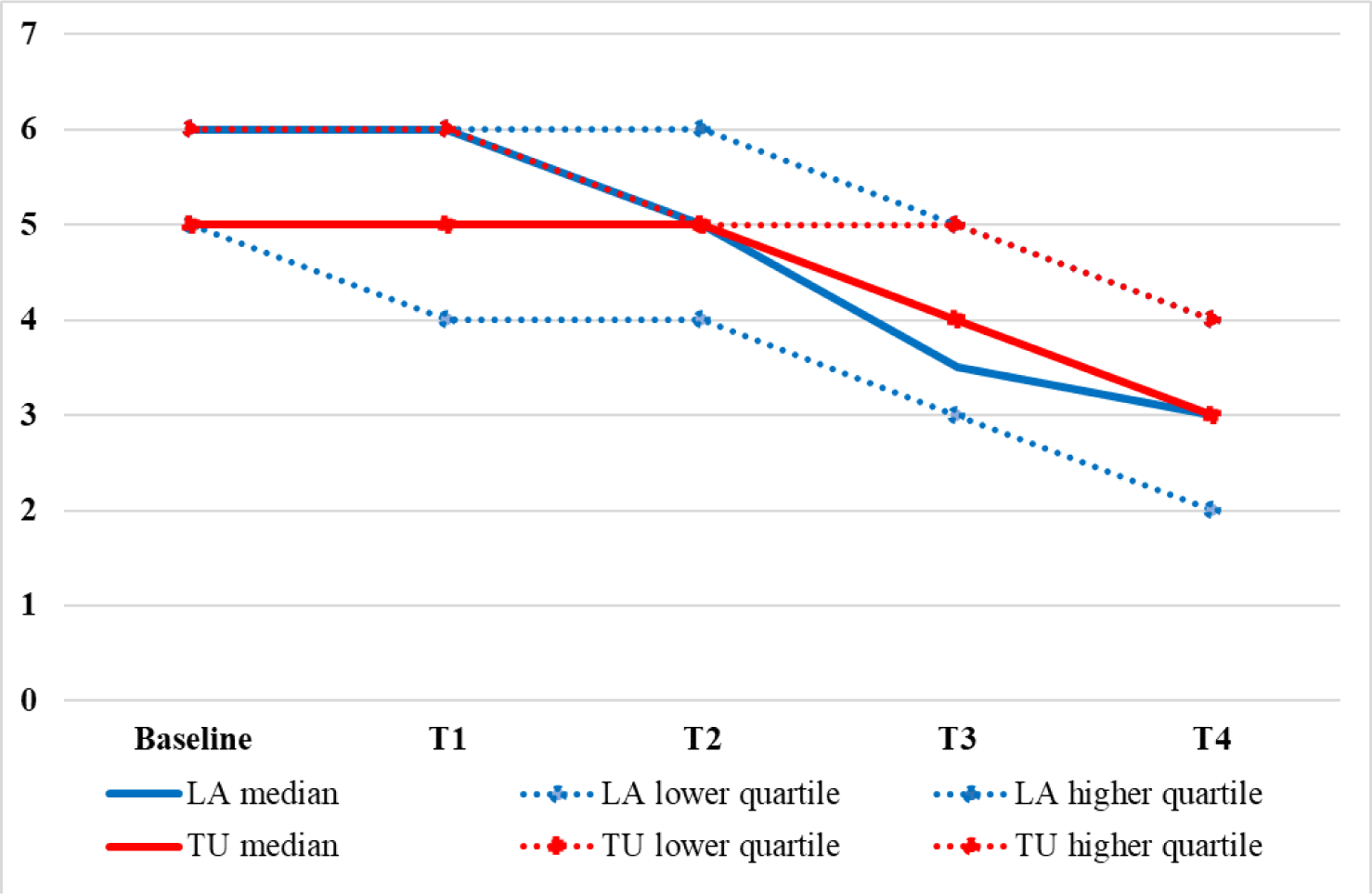1. INTRODUCTION
Knee osteoarthritis (KOA) is adults’ most common degenerative disease, affecting an estimated 302 million people worldwide [1]. This disease is characterized by joint destruction in which cartilage damage is primary, accompanied by damage to the ligaments and synovial membrane. Symptoms of KOA include stiffness, swelling, and reduced knee joint mobility [2]. This is a common disease in older people, with a prevalence of 18% among women and 9.6% among men over 60. Although there are no complete statistics in Vietnam, the number of older people is increasing dramatically, so knee osteoarthritis gradually accounts for a high percentage of musculoskeletal diseases.
In recent years, the management of KOA may include physical, psychological, and/or pharmacologic therapies (Non-steroidal anti-inflammatory drugs, colchicine, methotrexate ...) [2]. However, using these drugs may increase the risk of cardiovascular, gastritis, and gastrointestinal bleeding. Therefore, new non-drug treatment has been investigated for safety and few side effects if started early for all patients [3]. Knee exercise and thermal interventions (locally applied heat or cold such as ultrasound, hot and cold pack) are strongly recommended for patients with KOA, according to the American College of Rheumatology (ACR) 2019 [4]. Therapeutic ultrasound (TU) is a type of thermal intervention. That is beneficial for pain relief and functional improvement and safe for patients with KOA [5]. Laser acupuncture (LA) is a non-thermal intervention that uses a laser to stimulate acupoints. It has the benefits of traditional acupuncture and enhancing effect of local metabolism, increasing cellular ATP, and reducing pain according to modern medicine. Moreover, LA is a non-invasive, painless, no-bleeding method compared to traditional acupuncture [6]. Many previous studies reported the therapeutic efficacy of LA on KOA. LA and the TU could relieve pain regarding the VAS pain score and improve knee range of motion (ROM) [7, 8]. However, the quality of the previous studies is low, and no studies have compared the treatment effect of TU with LA treatments. Therefore, our study aims to compare the treatment effect between LA to TU on analgesic efficacy and knee ROM improvement among KOA patients in the protocol combined with exercise therapy. The results of our study will help select the suitable clinical application for KOA between LA and TU.
2. MATERIALS AND METHOD
This pilot study was a randomized, controlled, assessor-blinded clinical trial and followed the Consolidated Standards of Reporting Trials (CONSORT) (Appendix 3). Participants were recruited in May 2021 at Le Van Thinh Hospital, a district hospital in Ho Chi Minh City, Vietnam.
Patients who visited the Rehabilitation physiotherapy clinic diagnosed with osteoarthritis were invited to study. Osteoarthritis diagnostic criteria were based on the ACR 1991 guideline [9]. The clinical ACR criteria for knee OA had knee pain and meeting at least three of the following: age >50 years, stiffness <30 min, crepitus, bony tenderness, bony enlargement, and no palpable warmth. Inclusion criteria were patients older than 40, who completed the examination, and a knee pain score higher than 3 (on a VAS pain scale from 0 to 10, corresponding from no pain to worst possible pain). The exclusion criteria were patients who had a history of knee surgery, were being considered for joint replacement therapy, administration of intraarticular steroids, rheumatoid arthritis, knee injury, suppurative arthritis, sprain, dislocation, some disorders of skin knee (photosensitivity disease, tattoos and other pigmented tissues dark pigments), heart failure not stable, cancer, hyperthyroidism or symptoms of infection (fever, photophobia) [10].
This is the first study conducted to compare knee ultrasound and laser acupuncture. Therefore, a pilot sample size of 30 patients for each group was specified. Because with each group n= 30 determining the sample size needed to achieve a planned power for a test requires an estimate of the population standard deviation [11].
Eligible patients were randomly allocated to two treatment groups with an allocation ratio of 1:1. The LA group was treated by LA combined with KE for KOA. The therapeutic ultrasound (TU) group was treated by TU combined with KE for KOA.
Randomization using a lottery was used to allocate 60 patients to two treatment groups with a ratio of 1:1 (30 patients for each group). Each patient selected a number without replacement from an integer sequence from 1 to 60. Patients who got odd numbers were allocated to the LA group and even numbers to the TU group. Study staff conducting randomization, treating physicians, assessors, and analyzers were independent and had no information exchange. We applied assessors and analyzers blinding but did not apply patient and treating physicians blinding. Assessors weren’t provided the allocation results, and analyzers only knew two study groups but did not know the LA or TU group label. Due to the big difference between LA and TU treatments, the study did not have any appropriate blinding method for treating physicians and patients. Physicians who joined the treatment for patients differed from the groups and did not exchange information.
After being selected for the study, 60 patients were randomly assigned to two groups:
Groups TA: Patients were treated with combined laser acupuncture and knee exercise
Groups TU: Patients were treated by combined knee exercise with therapeutic ultrasound for the knee.
Patients in LA groups were treated by laser acupuncture for 7 minutes/ per day, 5 times a week, continuously for 4 weeks. The laser acupuncture used ACULASER Plus+ M320 devices (made in Vietnam) to make pulsed mode waves at the length of 780 nm, frequency of 60 Hz, wattage of 6 mW, and dose of 1,26 J for each acupuncture point (maximum 10 points and minimum 2 points). Previous studies and the World Association for Laser Therapy have recommended that laser acupuncture at low frequency (as 60 Hz in our study) is effective in osteoarthritis treatment [12-15]. Before conducting the RCT, a traditional medicine doctor with more than 10 years of experience calibrated and checked the laser.
The acupoints were selected based on previous studies on laser acupuncture for KOA patients [15-17]. Based on WHO standards, Dubi, Xiyan, and Ashi acupoints in knee joints were selected for laser acupuncture [18]. (Table 1)
The doctor washes his hands and wears sterile gloves. Identify acupoints, and disinfect the acupoints. The patient is wearing eye protection. Place the laser tip on the selected acupoint.
The TU groups were treated by Therapeutic ultrasound using the therapeutic ultrasound device (Model 2776 - Chattanooga, USA) with a dose from 0.5 – 1.5W/cm2, 7 minutes/day x 5 days/week for 4 weeks.
The patient lies supine on the bed or sits in a chair. The doctor accurately identifies pain locations in the knee joint and marks them.
The doctor placed the pressure head over the treatment area, increased the intensity to the treatment level, and then moved the pressure head slowly back and forth or in a helical direction. The pressure head is placed close to the treatment area, avoiding the bone area. At the end of the treatment time, turn the intensity knob back to 0. The process follows the guidelines of the Ministry of Health Viet Nam.
Our study applied four exercises: maintaining the knee's motion range, anti-spasm of muscles around the knee joint, strengthening quadriceps, and cycling. To maintain knee range of motion, the patient lies prone, and the technician holds one hand on the buttocks; one hand holds the patient's ankle and asks the patient to bend the knee close to the buttocks. The technician helps the patient to exercise the full range of passive range of motion. Practice 1-2 daily, 20-30 minutes each time. Anti-spasm of muscles around the knee joint (stretching exercise) is used when there is muscle spasm in the knee joint. For quadriceps strengthening, the patient sits on an exercise bench, and the technician fits the counterweight to the patient; then, the patient flexes the knee 10-20 times and rests for 2-3 minutes until the time is up (15-30 minutes). Cycling is a good exercise for the knee because it stimulates the legs’ large muscles, and the joint load is low. The patient rides on the hospital's stationary bike for 20-30 minutes/per day.
The treatment effect reflects throughout the knees VAS pain score during movement and knee range of motion. Outcomes were assessed at the end of 1, 2, 3, and 4 weeks of treatment.
The VAS is a common pain rating scale used for clinical research to measure the intensity of various symptoms [16]. It has demonstrated reliability and validity for pain measurement. In the study, VAS consists of a 10-cm line anchored at each end. The left-hand anchor reads ‘no pain’, and the right-hand anchor reads ‘worst possible pain’; the patients marked a line to represent their pain level [17]. For assessment of pain using the VAS, the patient makes a mark on a 10 cm line that corresponds to the pain intensity.
A standard goniometer (Figure 1) was used to measure the active knee ROM of patients in the supine position. The test was performed thrice for each direction, and the mean value was used for analysis [18].
Adverse events were assessed based on vital signs and medical history (commonly reported in the previous study, such as transient dizziness, skin redness, burn, hemorrhage, headaches, and fatigue [19]). We recorded all identified adverse events without referencing their association with interventions using a checklist side effects tracker table (appendix 2). The participants would temporarily stop this clinical trial if there were severe adverse decreased vision [20].
Data were analyzed on STATA software version 14. The outcomes were described as median with interquartile range (IQR 25th-75th). Fisher’s test examined the difference between LA and TU groups at baseline for qualitative variables (age, age group, gender, career) or the Mann-Whitney test for quantitative variables (VAS, ROM). Within-group differences over time compared to baseline (Δ) were estimated to show the treatment effect on each group and tested by Paired Wilcoxon test. Differences Δ between groups were examined by the Mann-Whitney test to show different effects between LA and TU treatment.
3. RESULTS
All 60 participants were screened for eligibility (Figure 2)
The baseline clinical and demographic characteristics of the groups were similar, and there were no statistically significant differences between them (Table 2)
After the first week, LA and TU groups showed statistically insignificant differences between groups (p2 = 0.916). In the second week, the LA groups had a statistically significant reduced VAS score of Δ: 0.5 (0 – 1) and a statistically significant difference compared to the TU groups (p3 = 0.034). In the third week, reduced VAS scores of the LA group were statistically significantly higher than the TU group (p = 0.362). In the 4th week, reduced VAS scores were statistically insignificant differences between groups (p = 0.362). The LA treatment relieves pain earlier than the TU treatment in the second and third weeks of treatment and equivalent at the end of the 4-week treatment. (Table 3)
After the first week, LA and TU groups showed statistically insignificant differences in ROM between groups. In the second week, the ROM score in the LA group had a statistically significant increase from 132.5 (130 – 140) to 140 (130 – 140) (p = 0.004) and maintained in 4th week. However, the TU group has statistically insignificant differences in 4 weeks. Reduced ROM scores were statistically significant differences between groups in 2nd (p=0.026), 3rd (p=0.020), and 4th week (p=0.018). (Table 4)
4. DISCUSSION
The study was conducted on 60 patients diagnosed with conventional knee osteoarthritis according to the ACR 1991 criteria. All patients were divided into 2 groups: The LA group consisted of 30 patients who performed laser acupuncture combined with exercise therapy, and the TU consisted of 30 patients who performed therapeutic ultrasounds in combination with exercise therapy. The patients were treated and monitored every week for 4 weeks. During the study period, no patient dropped out of treatment.
The characteristics of participants in our study show a higher proportion of females than males, mainly in the age group >60. These epidemiological characteristics are consistent with the post-studies Rashoud (2014) [21]. And this characteristic is equivalent between the two patient groups (p=0.08). This can explain why knee osteoarthritis is higher in women than men, despite no studies analyzing the biological markers for the cause of joint degradation. Women may have a greater need for healthcare and are anatomically different, with smaller knee joints than men. The processes of pregnancy and menopause can contribute to knee joint degeneration. The majority of participants in the study were over 60 years old, which can be explained by the mechanism of aging combined with improper knee joint movements during daily activities and work, leading to an imbalance between the process of synthesizing and degrading cartilage and bone beneath the cartilage, these reasons lead to KOA.
Knee osteoarthritis (KOA) is a major cause of pain and disability. In this study, the combination of laser acupuncture’s application and exercise therapy has benefits in reducing pain and improving knee ROM with KOA. Laser acupuncture was superior relief pain was significantly different in VAS score from in the TU groups at the time points 2 and 3 (p =0.034, 0.022). But in the period of 4-week intervention, no significantly significant differences between the two groups. That shows laser acupuncture has the benefit reduction pain earlier than therapeutic ultrasounds therapy.
In the flexion improvement, the laser acupuncture groups significantly differ in the range of motion with therapy KE treatment. This study shows the groups LA has a superior improved flexion improvement knee period compared with TU groups from 2 weeks to 4 weeks.
In agreement with Al Rashoud (2014) [21], Shen X (2009) [22], M. Rees [13], and Ali Lafta Mezaal [12]. Al Rashoud (2014) compared sham laser acupuncture and showed that LA compared with KE and advice effectively reduces pain and improves the quality of life in patients with KOA.
In traditional Chinese medicine (TCM), OAK is classified as a “Bi syndrome,” caused by blood stagnation or the accumulation of damp–cold-wind in the knee. Accordingly, it is treated by removing blood stagnation and dispelling cold and dampness. The formula for acupoints used in KOA research is various [8]. Thus, the two acupoints used in this study, ST35 – Dubi and Xiyan –(knee Eyes), are the two acupoints that benefit expel wind-dampness and are widely used in acupuncture formulas for KOA [21, 23, 24]. LA on Ashi point reduces pain and treatment dysfunction of musculoskeletal [25].
LA has more effect on the KOA, for example, a reduction in disease activity, joint tenderness, swollen joints, and morning stiffness [26]. Additionally, laser acupuncture has a positive effect on modulating inflammation, pain, and stimulus on osteoblasts [27, 28] and increases Adenosine Triphosphate (ATP) production [5].
KE is a critical factor in restoring the patient’s range of motion. Furthermore, combining KE with other methods, such as LA or heat therapy, will help reduce pain, helps the patient to practice better and easier, and improve the range of motion. The results agree with W. Zhang (2010) that action happens better and sooner.
Laser acupuncture is more effective in reducing pain and increasing functional activity in patients with KOA compared to the therapeutic ultrasound treatment. The adverse effects of LA in this study were similar to those of previous LA studies, demonstrating that LA is a safe technique for patients with KOA.
There were some limitations in this study. Firstly, the patients in the study can be blind when compared to the LA and the TU. Secondly, we applied simple randomization, which may lead to imbalanced sample size between groups. Our study’s sample size between groups is equal, and baselines are insignificant differences. Finally, pilot RCT with a small sample size may have limited the power. Therefore, future studies should be conducted with larger sample sizes.
Conclusion
The new point of the research compared to previous studies is the initial comparison of the treatment efficacy of laser acupuncture with ultrasound therapy. The research results show that although the treatment effectiveness is relatively similar between the two methods, laser acupuncture provides earlier pain reduction compared to ultrasound (both non-invasive treatment approaches) and does not have any observed side effects. This helps reduce the adverse effects of pain medication in managing knee osteoarthritis while demonstrating improved range of motion effectiveness. Conducting more RCTs with larger sample sizes and high-quality trials is necessary.




